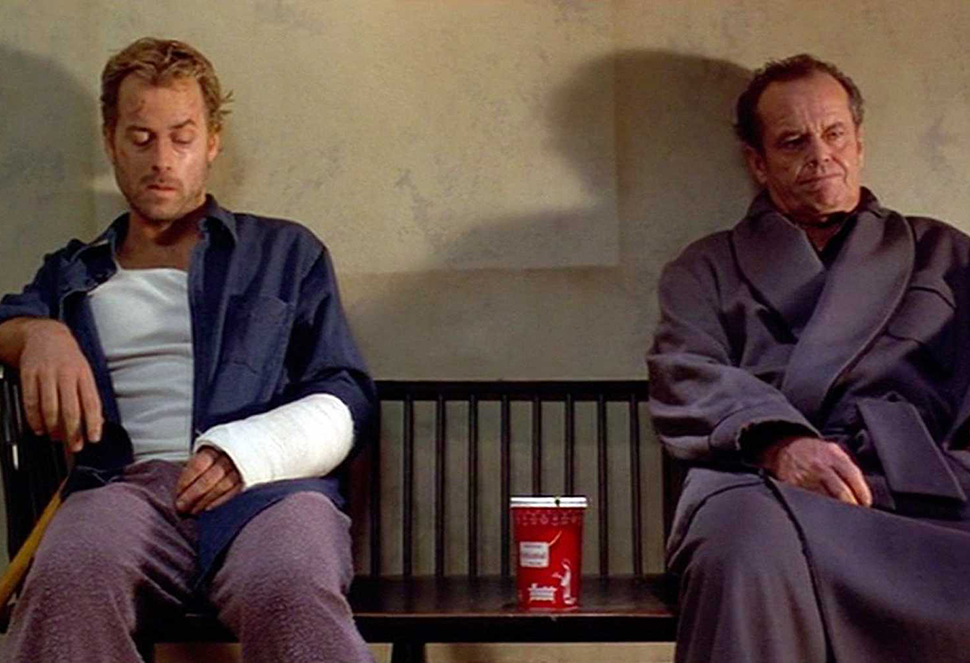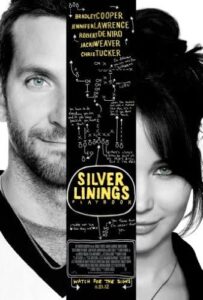Chronic illnesses and mental illnesses are all parts of life for many people. Sickness, after all, is a part of being human, with a body and mind that are both miraculous and fragile.
It’s little wonder that mental and physical illness are favored themes in Hollywood. After all, illness narratives always bring the drama. Usually, it’s a perfect recipe for clichés, for overwrought tragedy, and saccharine sentimentality.
But some movies get it just right, representing psychological disorders or physical disease in all their complexity. Some movies speak nuanced truths about people living with illness—and those who love them—without all the caricatures and bromides of the traditional illness melodrama. We’ll show you some of the best.
‘As Good as It Gets’ (1997)

“As Good as it Gets“ is a well-crafted dramedy that netted both its leads (the inimitable Jack Nicholson and Helen Hunt) Academy Awards for their extraordinary performances.
Hunt plays Carol, a harried single mother, struggling to manage her young son’s multiple chronic illnesses. Fighting to get her child the medical care he needs—and fund it on a waitress’s salary—Carol’s story provides a powerful glimpse into the world of chronic illness, a world of misdiagnoses and inadequate care, particularly for the uninsured and underinsured.
When the acerbic Melvin, played by Nicholson, offers to pay for Carol’s son to be seen by one of the city’s best pediatricians, Carol reluctantly agrees. After years of combat with the American healthcare system, Carol finally receives an explanation for her son’s chronic and potentially life-threatening symptoms: A hyperactive immune system, triggering allergic responses to previously unsuspected irritants, such as any number of seemingly harmless chemicals that can be found in most homes and schools.

Meanwhile, Melvin is facing his own battles. A best-selling romance novelist, Melvin is brilliant, famous, and rich. But he’s also beset by a formidably bad temperament, breathtaking lack of social graces, and symptoms of obsessive-compulsive disorder (OCD) that are initially so severe he can scarcely leave his apartment.
Only Carol seems able or willing to manage his rude behavior or accommodate the coping mechanisms he has developed to deal with his OCD-related anxiety. Melvin must bring his own cutlery to the restaurant where Carol works, literally the only establishment with the only server—Carol—he trusts with his food.
Even the brief walk from Melvin’s apartment building to the restaurant, which is just down the street, is an Olympian feat. The aging Melvin must hop, skip, jump, and twirl to avoid coming into contact with passersby or stepping on even the minutest crack in the pavement. The neurodiverse Melvin lives in a world that not many are willing to tolerate and fewer still can understand.
But Carol, having herself experienced with her son a reality that few can understand, can see behind the protective walls that Melvin has built around himself, to see the man behind the ill manners, with all his flaws, vulnerabilities, and exceptionalities. This, the film suggests, is the power of embracing diversity in all its forms, including the diversity of health and sickness, neurotypicality, and neuroatypicality.
‘The Fault in Our Stars’ (2014)

A film centering on two teenage protagonists dying of cancer would hardly seem to be prime material for a quirky story of first love. But 2014’s “The Fault in Our Stars” deftly avoids the trap of sentimentality and melodrama with characters who are at once bitingly sarcastic and unflinchingly realistic.
The young lovers, Hazel and Augustus, are played by Shailene Woodley and Ansel Elgort, giving mature-beyond-their-years performances. Above all, the narrative is profoundly human, showing characters living, truly living, with terminal cancer, discovering first love, and staying positive themselves by surrounding themselves with positive people. Hazel, Gus, and crew are compassionate without being condescending, pragmatic without being self-pitying.

They approach their illness with wry, sometimes dark, humor. They grieve their losses and rage at the injustice, but they don’t wallow. They move forward, clear-eyed and with no tolerance for platitudes or magical thinking. They deal. ‘
Hazel and Gus may have cancer. Their bodies are being consumed by it. But they are not defined by it, and this is the ultimate power of the film. Despite the pain of their illnesses and the risk involved, the young couple travels halfway around the world, to Amsterdam, to meet an author they both love. And the takeaway is there are still adventures to be had no matter how few years, months, or weeks remain.
‘Silver Linings Playbook’ (2012)

Underneath the veneer of a romantic dramedy, “Silver Linings Playbook“ is a chronicle of the challenges of living with mental illness, both for those who have been diagnosed and for those who love them. The story features Pat (played by Bradley Cooper) and Tiffany (Jennifer Lawrence).

Pat is dealing with the aftermath of an extreme manic episode that left him temporarily institutionalized, his mental breakdown coming after years of living with undiagnosed bipolar disorder. Tiffany is striving to recover from complicated trauma following the unexpected death of her husband. In the guise of a charming love story, the film exemplifies an often overlooked or long-denied reality of mental illness—that it is a marathon, not a sprint. Mental illness is not like a simple infection that can be cured with a two-week course of medication.
Mental illness is a lifelong reality, a reality that reverberates across all aspects of the individual’s life, a reality that informs all their relationships. Mental illness is fraught with progress and setbacks, with remissions and flares, with periods of quiet and periods of pain. But this is the reality of any chronic illness. And, again, as with any chronic illness, there is still life, love, and happiness beyond and outside of the illness, as Tiffanys and Pat’s tender love story demonstrates.
The Takeaway
Chronic illness is real. It’s not about clichés and platitudes. It’s not a dramatic storyline to be exploited for a good cry or a bit of inspiration. Fortunately, some of Hollywood’s most acclaimed films have gotten it right, with sensitive and nuanced portrayals of mental and physical illness, the good as well as the bad.
– by Frankie Wallace

